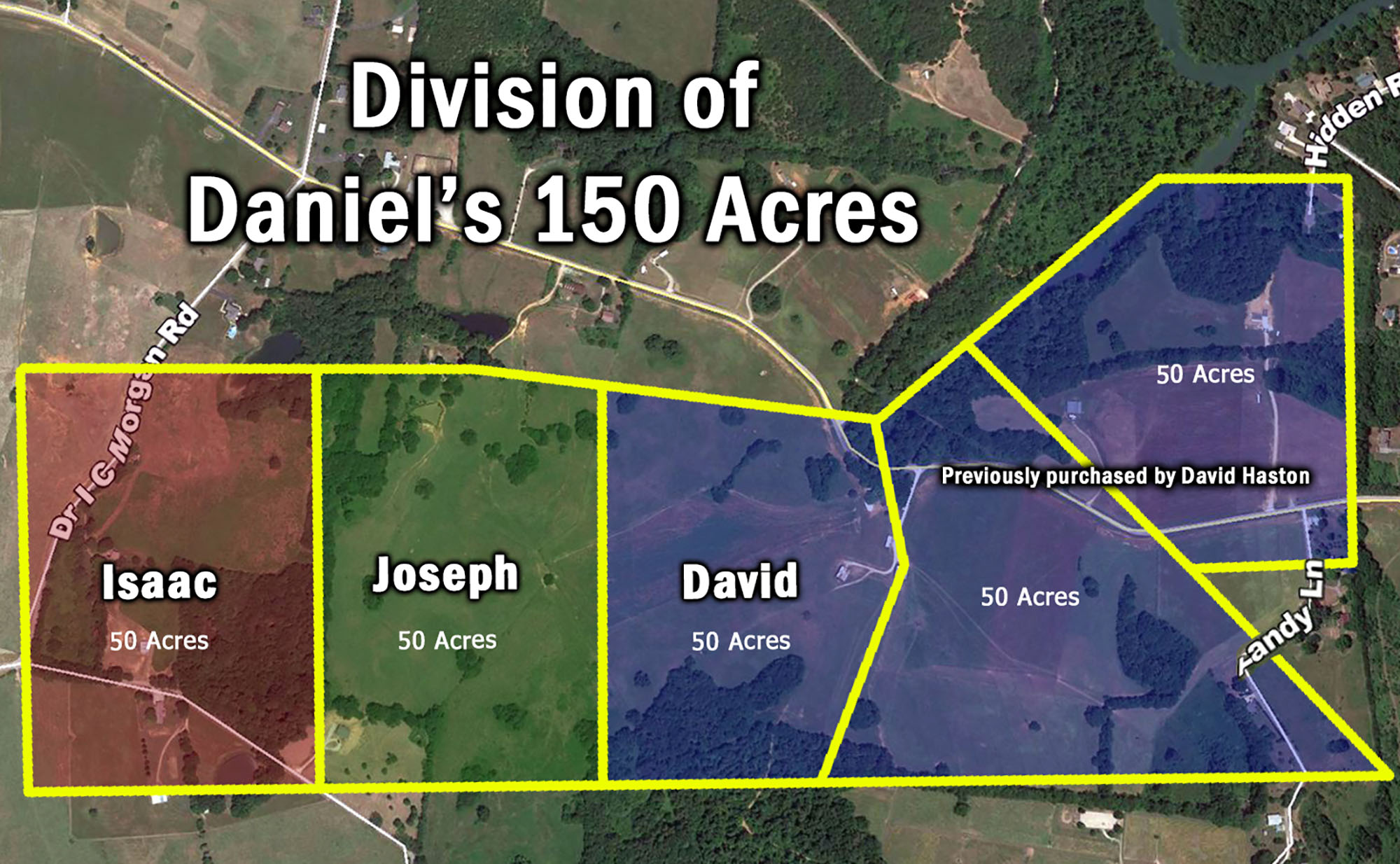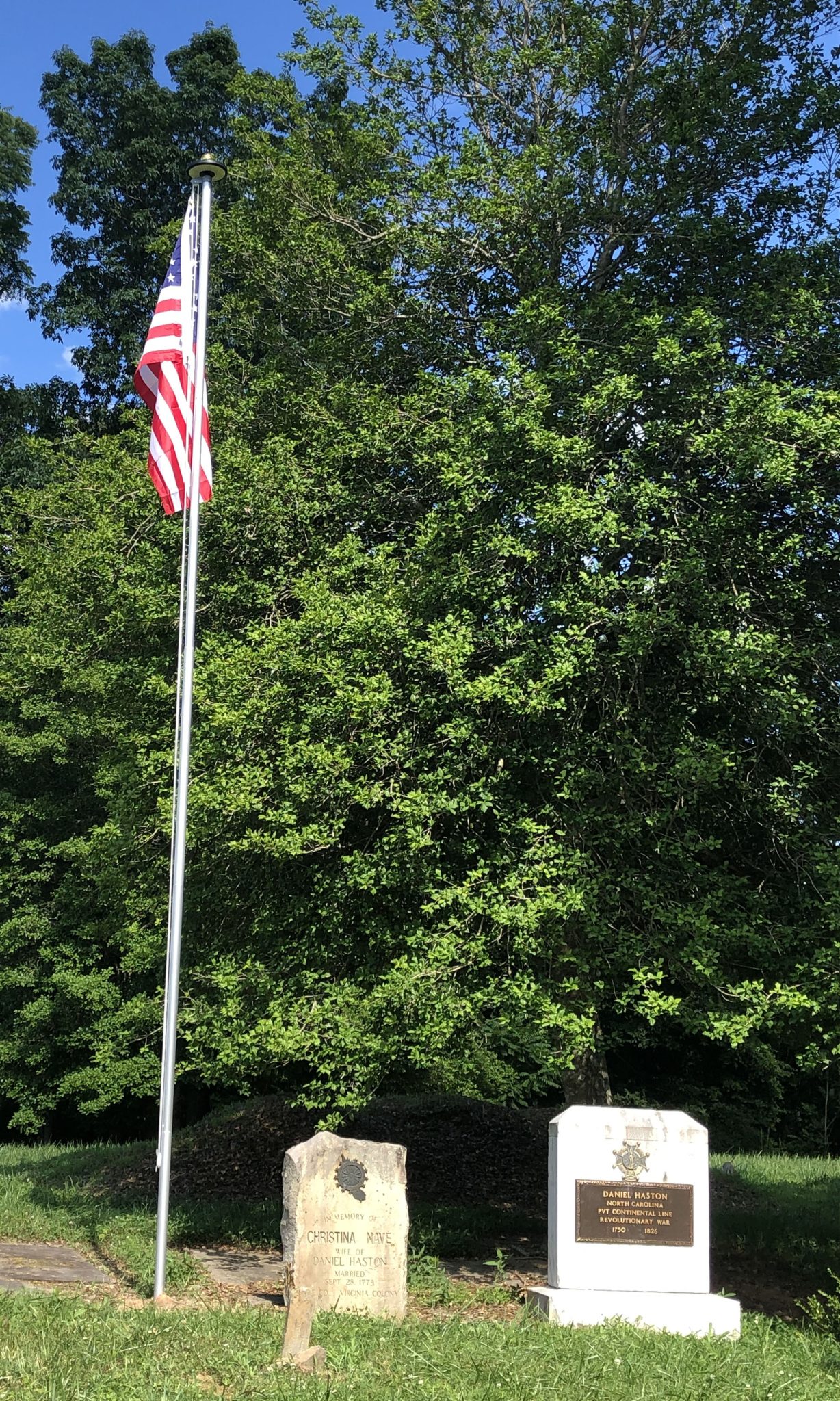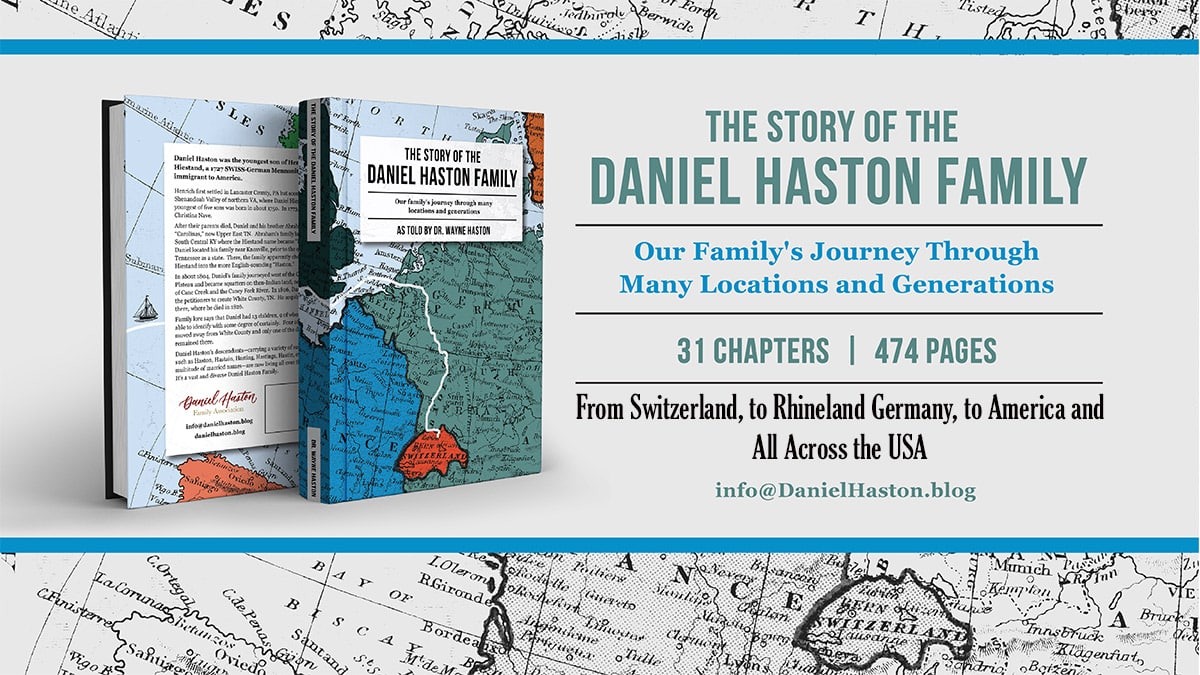33 - Daniel Haston's Final Years

Daniel Haston lived his final years on his 150 acres farm in what we now know as the Cummingsville community of northern Van Buren County–southern White County until 1840. There are a few things that we KNOW about his final few years there and a few more things we can speculate about based on some bits of evidence.
Jacob Mitchell vs. Daniel Haston - Assault & Battery Case
In 1817, Daniel assaulted adjoining landowner Jacob Mitchell. Jacob Mitchell married Lucinda Hastings, and thus was Daniel’s son-in-law. The assault and battery case that originated the previous year, State vs. Daniel Haston, was prosecuted in the White County court in July 1818.[i] Daniel was fined fifty cents on a plea of guilty on July 24, 1818.[ii]
[i] White County, Tennessee County Court Trial Docket, 1818-1821. (original book)
[ii] White County, Tennessee Minutes of the Court of Common Pleas, 1818, 209, 227.
Frontier brawling to settle disputes were common and legal, but assault and battery was a different matter. “Official reaction to the offense often depended on the circumstances.” “The court could not condone the initial assault, but perhaps the small fine reflected the fact that both men had fought willingly after.”[i] Daniel was probably in his upper 60s at the time, so he probably didn’t engage in much of a brawl, if any.
[i] Finger, 157-158.
Daniel Divided His 150 Acres Among the Three Sons Remaining in Tennessee
There are indications that Daniel’s health was failing. In January 1821, his name appeared on Daniel Hastin appeared on an inventory of debts owed to a deceased Lawson Nourse, who was one of the earliest physicians in Sparta, Tennessee. Daniel was on the “Bad Debt” section of the list for a $3.00 debt, but the word “good” (for whatever reason) was written just to the right of his name. Perhaps he (or one of his sons) paid the bill after the list was created in January 1821 and before it was officially recorded in January 1827.
For a frontiersman like Daniel to consult a physician—at a cost of $3.00—would indicate that he was dealing with a painful or debilitating injury or a serious health problem. He was about 70 years old at the time, so it should not surprise us.
As was also true on the 1818 tax list, in 1822 Daniel does not appear, but Isaac appears with the 150 acres on Big Spring.[i] Isaac was probably farming his grandfather’s land for him at that time. It seems that Daniel had been struggling with a serious health condition or complications from an injury for the past four or five years or so. His son Isaac, who apparently was not yet a land owner, seems to have been tasked with farming his father’s 150 acres again. The ownership of Daniel’s farm was about to change.
[i] White County, Tennessee Property and Poll Tax, 1821-1825, 70. (original books)
Although there is no existing legal record of it, apparently Joseph inherited 50 acres of land from Daniel shortly prior to this time. It appears that Isaac also inherited 50 acres from Daniel, but quickly sold his inheritance. A May 15, 1822 deed shows that for $20 Isaac sold two of his acres to Rhodum Doyle, who lived in Shockley Cove.[i] The deed indicates that this lot was located on the west boundary of Daniel’s Grant #535 of 150 acres. The deed says these two acres were “…a part of a hundred and fifty acre tract originally granted to Daniel Haston by the State of Tennessee No. 535.”
[i] White County, Tennessee Deed Book I, 312.
David, the oldest son, inherited the 50 acre home place from Daniel but that probably did not happen until his father he died. In the 1827 tax list (year after Daniel died), David’s 100 acres had expanded to 150 acres.
Daniel Died and Was Buried in the Big Fork Cemetery
Daniel’s name was on a January 1, 1826 “list containing the names and number of free male inhabitants of the age of twenty years and upwards and resident citizens in Capt. Parkers company on the 1st day of January 1826 taken by David Hasting, Esq.” This was not a tax list with property and polls information, etc. It appears to have been a county census.[i]
[i] White County, Tennessee Property and Poll Tax, 1826-1829, 8.
Although the census was dated January 1, 1826, it wasn’t presented to the White County Court until July 10, 1826 and wasn’t certified until October 31, 1826. Daniel Hastin’s name was on this census, although it seems (by his absence on the next year’s tax list) that he died sometime during this year. Does this mean that he was still living by July 10, 1826 or even October 31, 1826, or does it mean the census included everyone who was living on January 1? His name was also on the 1826 tax list (recorded by David Haston, Justice of the Peace), which was generally taken early in the year.
This was the last year that our Daniel’s name appeared on a census or a tax list. Thus, it is assumed that he died sometime in 1826. Daniel was buried in the Big Fork Cemetery in the Cummingsville community of White County (now northern Van Buren County), Tennessee. His grave is located near the uppermost corner of the cemetery (northwestern section), very near where the Big Fork Baptist Church building seems to have been in the first half or so of the 19th century.

Daniel’s grave was unmarked for many years, but fortunately John Taylor Haston (Confederate veteran), in his old age pointed out the location of the grave to his son, Casto Haston.
Questions often arise regarding the Revolutionary War plaque on Daniel’s grave marker. It wasn’t placed there by the DAR or SAR. It was placed there by one of our long-standing Daniel Haston family historians, with whom he and I have agreed to disagree as friends about Daniel’s Revolutionary War experience, or absence of Revolutionary War experience.
I have explained my view that our Daniel was not a Revolutionary War veteran in these previous articles, a conclusion that I did not come to happily.
The "Christina Nave" Grave
You have heard the question–“Who is buried in Grant’s grave?” We could ask a similar question about the “Christina Nave” grave.
Frankly, nobody knows for sure. We do know with near-total certainty that our Daniel Hiestand/Haston married a Christina Nave in Shenandoah County, VA in 1773. But that is the only historical record we have for her.
We do know that a woman over age 45 was living in the Daniel Haston household in 1820, according to the census. Was that Christina Nave? Was it a second (or even third) wife? Was it a member of his family who was helping to care for him when he was about 70 years old with some apparent health problems? We just don’t know.
If you appreciated this article, please share it with others who might also enjoy it.

